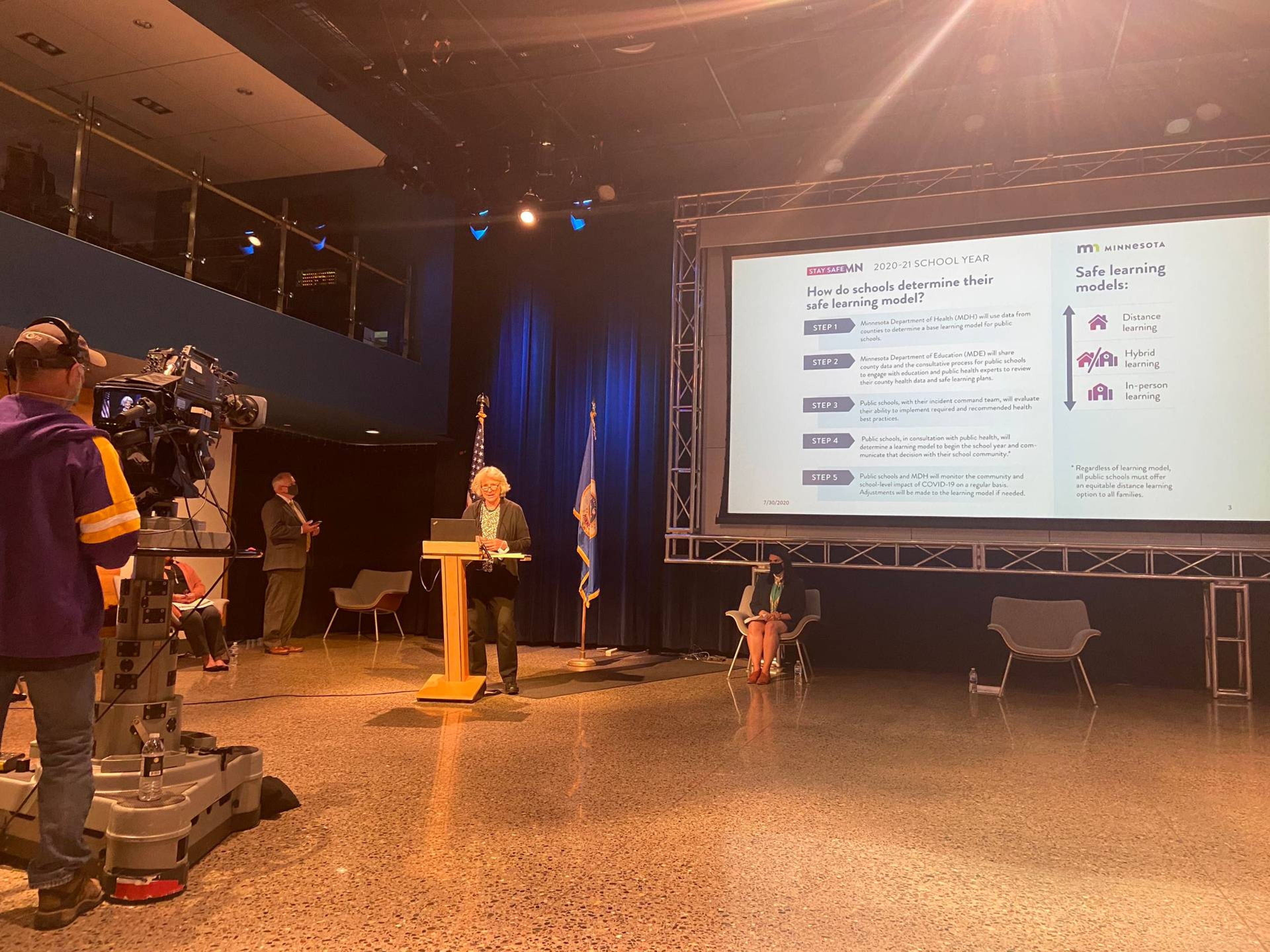What will back-to-school look like in Minnesota?
Gov. Tim Walz announced a flexible and complicated back-to-school plan that works with school districts despite an unpredictable pandemic. In revealing the plan, the governor pointed out that Minnesota is "the only state that has a governor and commissioner who are public school teachers."
We wondered how feasible it is with 336 school districts and 87 counties that could constantly move throughout that 5-part grid of learning model. "It's a lot of work and a lot to unpack. The thing is, COVID isn't easy. COVID doesn't care if this is hard work for us. COVID doesn't care how many school districts we have," Gov. Walz said. "We have to use the best data we have possible. We have to use that data a put it into a plan that works. We understand that, if we can simplify and make it as easy as possible, there are people who would love to have just one statement... We think this is the best way to do it."

Health Commissioner Jan Malcolm called it one of the most consequential, hardest decisions they’ve have had to make, after months of many difficult decisions during the pandemic. “COVID-19 is not going away any time soon. It is still very much with us. We're still in the growth phase of this pandemic," Malcolm said. "But we also can't stop attending to the learning needs of Minnesota kids. The virus will continue to evolve, and so will these plans."
Education Commissioner Mary Cathryn Ricker explained, “This plan is an approach that is localized and data-driven and grounded in science. We have gotten used to expecting the unexpected."
Students and teachers are allowed to do distance learning if they choose and, depending on the number of coronavirus cases in the county, districts have guidelines on whether to go with an in-person, online or hybrid approach to school.
Leading up to the governor’s announcement, teachers participated in a parade outside the State Capitol. They urged policymakers to let science decide how to handle school options this fall, arguing that many of them are at a high risk of exposure if they return to the classroom. A survey from the teacher’s union showed conflicting results, essentially suggesting they will do in-person learning if they must and distance learning if they can. Teachers held signs with statements such as, “Children are not guinea pigs,” in an effort to amplify their argument that kids deserve safe, equitable schools as the pandemic and protests further reveal the state’s concerning education gaps.
But educators of color say they are at an even greater risk of contracting the disease and that may of them are the primary caregiver to someone who is very sick or dying from COVID-19.
“As a math teacher, numbers matter to me. Sixty percent of teachers of color say they prefer distance learning to all other options. That is 11 percentage points higher than white educators," explained teacher Sizi Goya.
Janitorial staff also say they were already stretched thin and are concerned about their safety and others. Steve Militich, a school custodian said, “If Minnesota does in-person or hybrid learning this fall, increased environmental cleaning is going to require additional custodial staff."
Stay tuned to Almanac on TPT2 on Friday nights at 7 pm for ongoing coverage of how Minnesota schools negotiate their options this fall.
While visiting the Northwest Angle, One Greater Minnesota reporter Kaomi Goetz shared a story about the state’s last one-room public school where children in the tiny community – population 125 – learn through a form of mostly independent study until the end of sixth grade. After that, many are homeschooled, while others make a three-hour round-trip journey to Warroad, Minn., where they complete their studies.
Saint Paul’s Dugsi Academy – which will soon be rebranded as Midway Academy – primarily served Somali students. Discover how the school’s teachers and administrators have gotten creative in finding ways of serving students despite a lack of resources that bigger school districts have ta their disposal.
The closures of schools across the state has also provided an opportunity for intergenerations connection between kids and their grandparents, who can relieve parents trying to juggle working, teaching and parenting from home.
